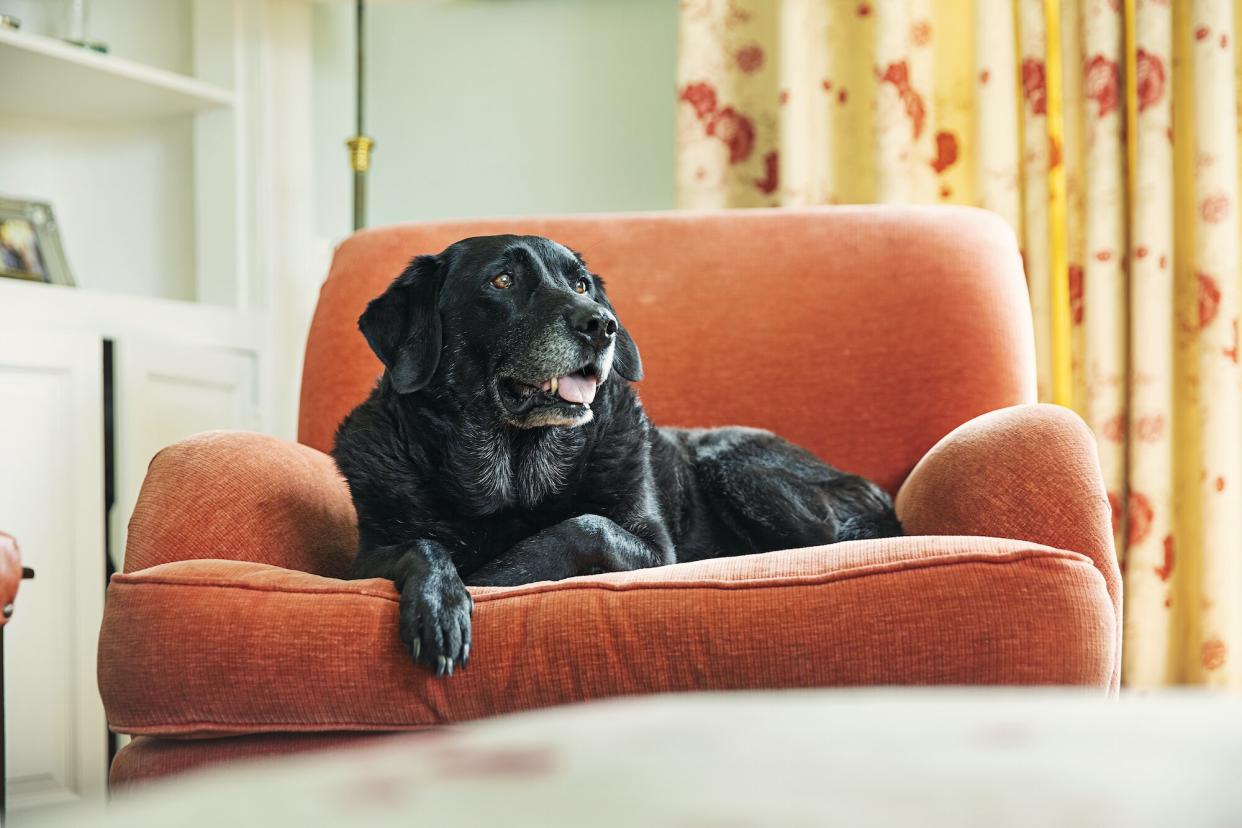10 Ways To Modify Your Home To Keep Your Senior Dog Comfortable and Safe

Justin Paget / Getty Images
As your beloved pup grows older—it's important to make changes to your home to help your senior dog live the safest and healthiest life possible.
Conditions like arthritis and other issues such as vision changes often develop with age and can require you to make some changes to accommodate your dog, keeping them happy and safe.
Depending on your pup's circumstances, there are many ways you can modify your home to accommodate their needs—from installing pet ramps to simply placing night lights around your home. These 10 veterinarian-approved tips are sure to make your home more accessible while also keeping your senior dog comfortable in their golden years.
1. Help Their Mobility
This first tip is more of a "dog modification" rather than a home modification, as Alicen Tracey, DVM, puts it. Helping your senior dog's mobility is important when it comes to your pooch staying safe while navigating the house.
Tracey recommends rubber booties or some sort of high-traction footwear to help reduce slipping and sliding. She says it's also important to keep up on toenail trimming in older dogs, as long nails can cause them to slip easier on hardwood surfaces.
2. Create a Rug Path
If your pup isn't a fan of footwear, rugs are another way to help prevent slips and falls without the hassle of trying to put booties on a squirmy dog. Place rugs in a path your senior dog travels often to give them a sense of familiarity if their vision is failing.
If rugs aren't your style, Tracey suggests using yoga mats as an alternative to help with wayfinding and traction.
3. Grab an Extra-Cozy Bed
A nice bed won't only make your pup happy and comfortable, it'll also give them the much-needed support their aging bodies need.
Tracey tells Daily Paws that many older dogs, especially larger breeds, can experience pressure sores on their bodies. You can combat this by increasing the amount of bedding your dog is using. Tracey recommends a memory foam dog bed or mattress pad.
Orthopedic dog beds are another great option for senior dogs—especially ones dealing with arthritis or other joint issues. A heating pad or heated bed might also help ease joint pain and help with temperature regulation.
RELATED: Can Senior Dogs Get Dementia or Alzheimers? We Asked a Vet
4. Keep Furniture in the Same Places
If your senior dog is experiencing vision loss, one of the best things to do is not change your setup. Chances are, your pet is pretty familiar with the layout of the house and changing it can possibly cause injuries in pups who are losing their sight.
If you do need to move things around, Tracey suggests slowly introducing your older pup to the new layout with a leash to allow them to get to know the new furniture placements and prevent bumping into objects they can't see.
5. Block Off Danger Zones With Gates
Incorporating gates in your home is another way to prevent potential injuries, especially with a recent furniture change. Blocking off unfamiliar or rearranged areas with gates can help keep your dog from wandering into something they shouldn't. Blocking staircases is also a good idea if your pup is no longer able to use them safely.
6. Get Dog Stairs
If your sweet senior loves to curl up in bed with you every night and still has the ability to climb up stairs, dog stairs can help them get on furniture easier without having to jump—which could cause injuries with fragile, older pets.
7. Install Ramps
If stairs aren't an option for your senior dog but they still want to get on furniture, ramps are an alternative that serve the same purpose. Not only can ramps help with getting on furniture, but Tracey says ramps can be a safer option for pups who still want to climb staircases but probably shouldn't be using them.
8. Place Night Lights Throughout Your Home
While they might be able to see just fine during the day, Tracey says seeing in the dark can be an issue for older pups experiencing vision changes.
"There are certain visual things that can happen for senior pets where ... nighttime can be a problem," Tracey says, recommending night lights in dark hallways and stairways as well as floodlights outside.
RELATED: Ailments of Aging Dogs: 5 Health Challenges to Watch for in Your Sweet Senior Pup
9. Elevate Food Bowls
We want to make our senior pups' lives as easy as possible. To make feeding time easier on their bodies, Tracey recommends using elevated food bowls so they don't need to bend down as much and cause extra strain on the head and neck area.
10. Protect Pet-Used Furniture
With senior pets comes the potential for accidents. If your dog is an avid furniture user, you might want to keep those harder-to-clean areas protected. Add a couch cover, blanket, or some other sort of furniture protector to ease accident cleanup, and consider using dog diapers if incontinence becomes a bigger issue.

